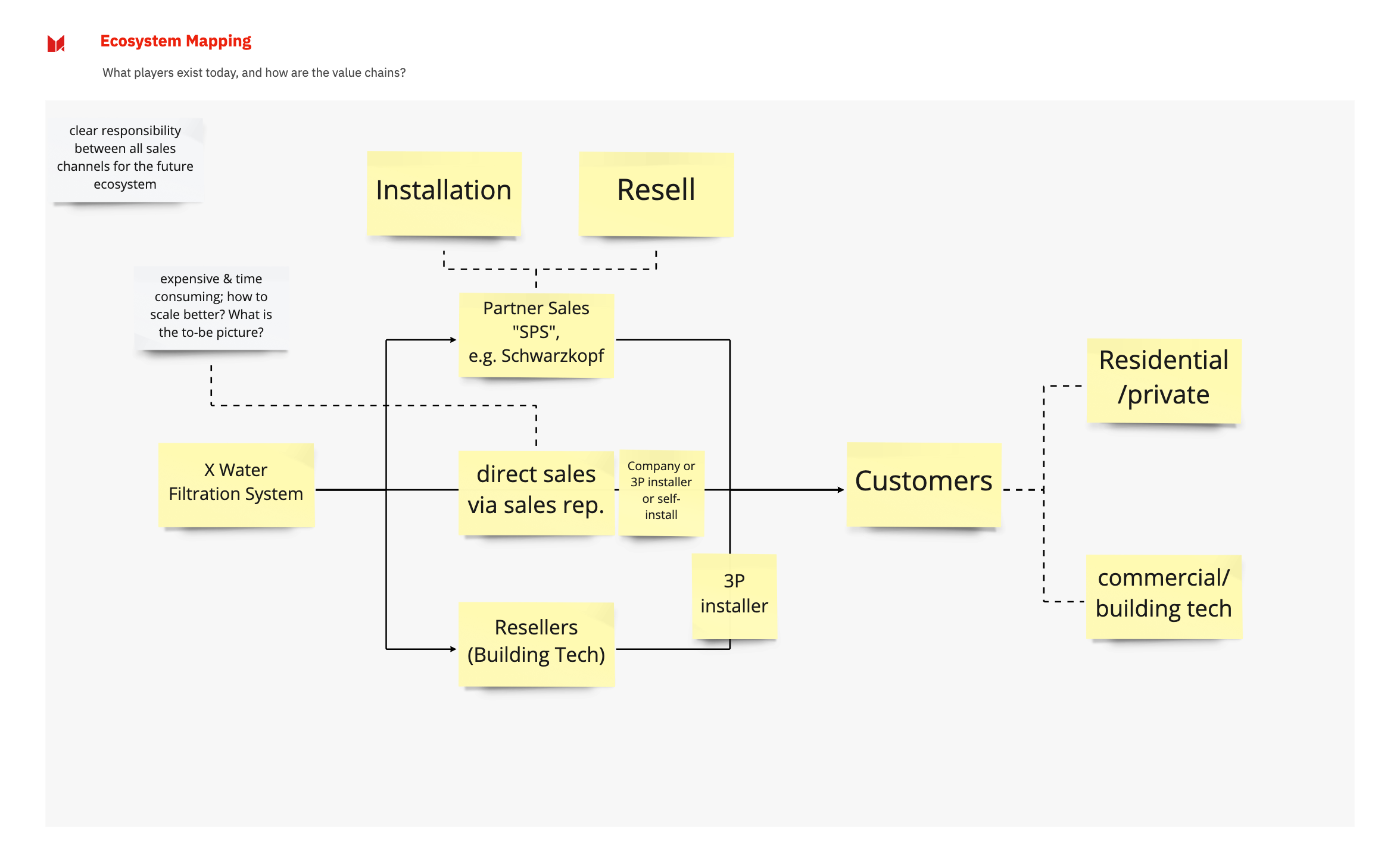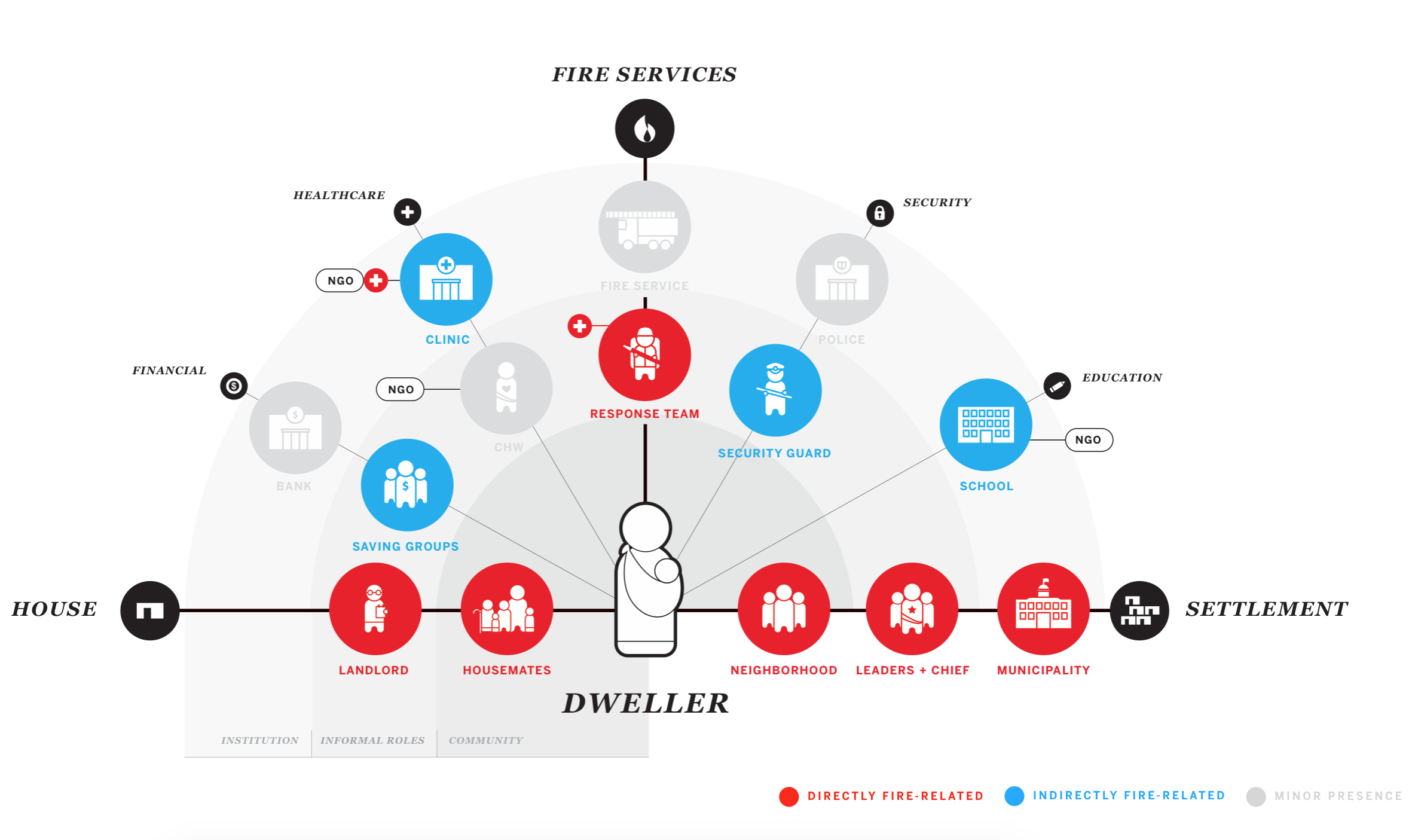¶ Ecosystem Map
¶ What it is
The ecosystem map is a synthetic representation that captures all the key roles influencing the user, organisation, and service environment. The ecosystem map is built by displaying all the entities and then connecting them based on the type of value they exchange. An ecosystem comprises these actors, parts, and dynamics.
¶ Why it is useful
The ecosystem map uncovers existing gaps and identifies valuable opportunities for synergies. It also helps you understand the relationships and dependencies between the various actors and parts contributing to customer experiences.
¶ When to use it
This is very helpful when we want to understand and sort out a complex system and evaluate our customer journeys (how it connects and interact with each other).

¶ How is it done
1. Identify all players and entities involved in the product/service supply and delivery.
2. There are two ways to map out an ecosystem: choose users/customers as a focal point and find players around, or map it as a whole system and focus on links between different players.
1) Focal point on users/customers
- Place the user at the centre of the worksheet, then position the other players in the space around. Try to put closer to the centre the ones more important to the customers. When they are on the map, start tracing connections between the user and other players and then among the latter.
- Take a step backwards and observe the map. Do you notice anything missing? Discuss within the team.
- Drawing on the new additions, highlight pain points or gaps in the map. This activity helps understand which aspects need to be improved or further explored and share these insights with other team members or stakeholders.
2) Holistic view of the whole system
- Connect different players by the nature of their interactions, identify the functions of each player and the relationships between players.
- Map out significant information/communication flows (money, goods, services, etc.)
- Reflect and identify where is our weak link, how this impacts the rest of the system
¶ Do's & Don't
Do's
- Search in-depth also for players operating behind the scenes and those not directly involved with the product/service but that impact it.
- Use different lines (appearance, color, stroke) to represent other relationships, such as information exchange, money exchange, etc.
- Keep visualising any new detail noticed on the map, for example, using further colors or dividing the players into sub-sets.
¶ Tools needed
- Whiteboard (virtual)
¶ Example
Example 01 presents an overview of the selling water filtration system ecosystem; it’s a quick exercise to clarify current channels and connections and identify weak links/processes. This ecosystem focuses on the channels, and there is no focal point.

Example 02 visualises all the services and actors involved in fire prevention and intervention and be able to compare different context. This ecosystem puts users (dweller) at the focal point and then connect others at different layers.
